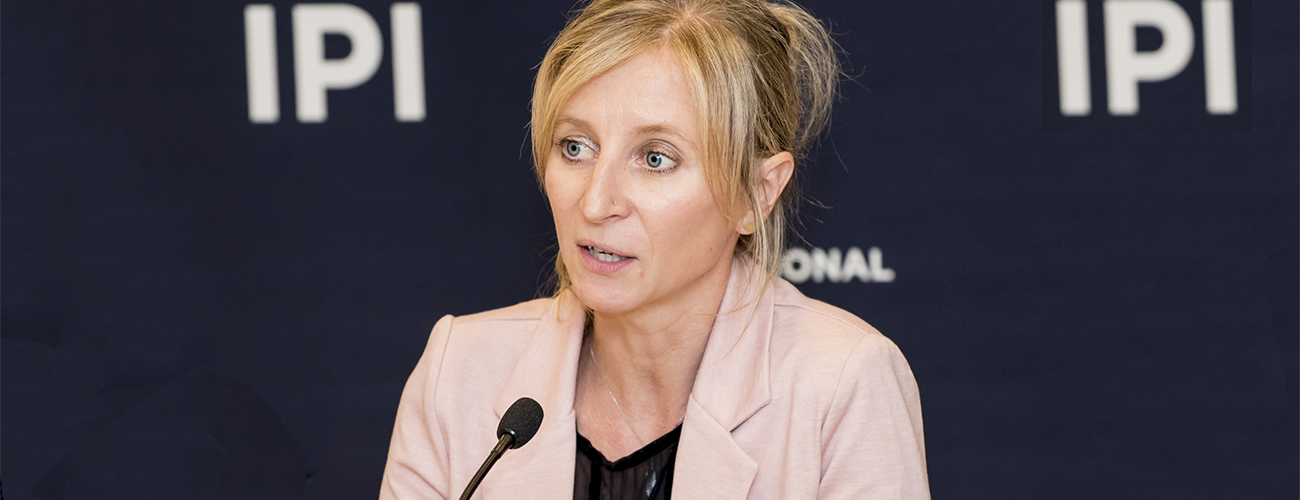“We need far more political will and far more investment,” said Alexandra Bilak, Director of the Internal Displacement Monitoring Centre (IDMC), discussing the conclusions of her organization’s new report at an IPI event May 23rd on “Refocusing Attention to the Plight of IDPs.”
“Not just humanitarian investment,” she said, “we need investment across the board.”
Pointing out the persistence of the IDP problem in vulnerable parts of the world, Ms. Bilak said that three quarters of the world’s IDPs come from just 10 countries and that many of these countries have been on the list every year since 2003.
The report provides data critical to confronting the problem, she said, but added that, “Evidence alone is not enough. Each year IDMC’s evidence fails to elicit a response commensurate with the scale of the problem. This reflects international indifference, lack of accountability and state failure to protect its people.”
Geir O. Pedersen, Permanent Representative of Norway to the United Nations, noted that the IDP dilemma was overshadowed by the current migration crisis which has attracted so much attention. IDPs and refugees are both forced to flee from their homes, but refugees cross borders while IDPs are still within the borders of their home countries.
“IDPs are usually left out of the discourse across the road on refugees and migrants,” Ambassador Pedersen said, referring to the UN. “It has been difficult to bring in the IDP issue.”
The report showed that there were 31.1 million new internal displacements across the world in 2016, 6.9 million of them due to conflict and violence, and 24.2 million from disasters. In global terms, that amounted to one person being forced to flee every single second, the report said.
These figures bring the total number of people living in displacement in the world to 40.3 million people, according to the report.
Jan Egeland, the Secretary-General of the Norwegian Refugee Council, called this growth in numbers of displaced people “a catastrophic failure on the local, national, and international level.” Noting that so much of the excessive migratory movement across the world was caused by conflict and by environmental neglect, he said, “We can’t allow more totally preventable and fully man-made crises to develop.”
Firas Hassan Jabbar, counsellor in the Permanent Mission of Iraq to the United Nations, said the problem in his country was exacerbated by the brutal tactics of fighters from the Islamic State. “They keep people from reaching safe areas by posting snipers on the roofs of buildings and gunning down anyone who tries to flee, and they put families on the front lines while launching attacks against Iraqi forces,” he said.
The fighters also destroyed the structure of cities, he said, and sent suicide bombers into camps harboring the displaced.
Mahmoud Mohieldin, Senior Vice President of the World Bank Group, said the report was of great value to his organization. “Data and information about what we talk about is key,” he said. “Coordination, finance, implementation in the field, innovation of tools related to risk management… this report will guide our teams in the field.”
The report lamented that significant new internal displacement associated with conflict and disaster takes place every year, adding to the many millions of people already displaced and illustrating both the intractable nature of the phenomenon and governments’ inability to cope with its impact.
The report called for a “paradigm shift,” from a focus on meeting immediate needs to understanding the interwoven causes and structural drivers of displacement, and from offering solutions driven by institutional mandates to jointly investing in reducing vulnerability and mitigating the longer term impacts of displacement.
The event was co-organized by the Permanent Mission of Norway to the UN and IDMC.
The discussion was moderated by Els Debuf, IPI’s Head of Humanitarian Affairs.








